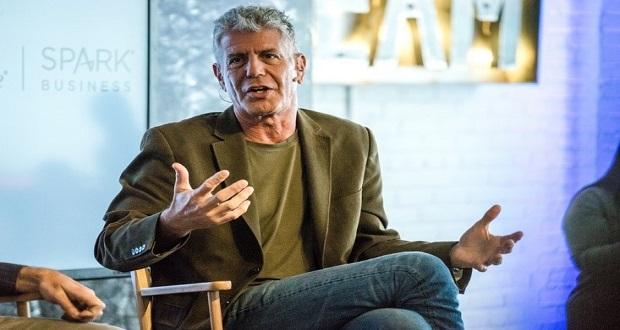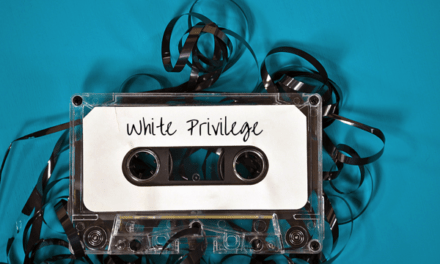As many companies turn to social media as a form of advocacy against racial injustice in this VUCA world, many BIPOC continue to experience harassment and discrimination within the workplace. The global call to action against racial injustice first began in 2020 at the death of George Floyd and Breonna Taylor. Increased racial violence being broadcasted has brought much attention to the experiences of Black, Asian, and other BIPOC community members. Despite trending hashtags and infographics supporting these communities, BIPOC workers continue to be a minority in many organizations and are overlooked when advancement positions become open. Companies who choose to make public statements and pledges against racial injustice experience higher earnings according to a 2018 survey covering 35 countries but are still losing employees at an exponential rate. How has performative allyship contributed to The Great Resignation, an ongoing mass exit from the workplace including 47 million Americans who have left their jobs voluntarily?
Despite trending hashtags and infographics supporting these communities, BIPOC workers continue to be a minority in many organizations and are overlooked when advancement positions become open. Share on X
Performative Allyship In The Workplace
Many members of the BIPOC community are wondering where the follow-up is from their coworkers and leaders after they’ve posted black squares on Instagram or shared photos of them participating in rallies for racial equality. All too often, BIPOC employees are more likely to encounter prejudice and microaggressions than other groups in the workplace. Some examples are subtle, like reminding BIPOC employees they are “so lucky” to be given a chance to work in corporate America or assuming their position in the company is entry-level before ever asking. Some examples are more direct, like paying BIPOC women significantly less than White, non-Hispanic men for the same workload and commitment. These types of behaviors contribute to a psychologically unsafe environment, which in turn is correlated to a lack of engagement and commitment to the organization.
Many BIPOC are wondering where the follow-up is from their coworkers and leaders after they’ve posted black squares on Instagram or shared photos of them participating in rallies for racial equality. Share on XAccording to Fortune, Black employees across industries are calling out performative allyship when concerns surrounding inequitable hiring, pay, and promotion practices are being brought to management and are being ignored. As a result, many Black and other BIPOC employees are joining The Great Resignation in hopes of finally breaking barriers in the professional arenas of advancement, opportunity, and earnings. According to a Savanta Report, lack of diversity and inclusion within the workplace has contributed to one-third of BIPOC’s decision to leave the workplace. As a result, companies are losing talent due to unkept pledges and false representations of equality.
Lack of diversity and inclusion within the workplace has contributed to one-third of BIPOC's decision to leave the workplace. Companies are losing talent due to unkept pledges and false representations of equality. Share on X
Ways to Promote Real Allyship Within the Workplace
There are many ways to be a real ally in the workplace and steps to support and retain BIPOC employees during The Great Resignation.
1) Make DEI efforts a company responsibility, not just an HR responsibility.
For years, the status quo has allowed mid-senior level managers and the C-Suite to delegate the responsibilities of enforcing an equitable environment to their HR departments. Most often, HR departments face limited resources and power to manifest long-lasting change without the participation of its leadership. According to the Harvard Business Review, 70% of employees correlate inclusion efforts with the commitment and behavior of their leaders. Therefore, inclusive leadership is crucial to fostering a climate where all employees can feel safe.
For years, the status quo allowed managers and the C-Suite to delegate responsibilities of enforcing an equitable environment to HR, which often face limited resources and power to manifest long-lasting change. Share on XInclusive leadership is defined as “the capacity to manage and lead a heterogeneous group of people while respecting their uniqueness in an empathetic, bias-free way.”
2) Cultivate and encourage the development of emotional intelligence.
Daniel Goleman describes the five critical elements of emotional intelligence as: self-awareness, self-regulation, motivation, empathy, and social skills. Below are questions White employees can ask themselves while keeping emotional intelligence at the forefront when cultivating real allyship in the workplace.
- Self-Awareness: Is my motivation to speak up for communities on social media to feel good or to advocate for equitable opportunities and representation? Am I willing to speak up for BIPOC employees even though lack of representation and/or wage disparity doesn’t affect me personally?
- Self-Regulation: Am I willing to admit fault for purposeful or accidental hurt I’ve caused based on the actions or language I deemed acceptable at one point in time?
- Motivation: Will I continue to advocate for greater diversity and inclusion in the workplace even when it’s not trending in the media or if it takes months or even years to achieve?
- Empathy: Can I be emotionally open and actively listen to an experience different from my own? Am I able to continue being open and listen to ways I can be a better ally if it means adjusting some of my own behaviors?
- Social Skills: Am I mindful of everyone’s needs when creating social opportunities amongst my colleagues? Am I fostering an environment where everyone can be authentically themselves?
3) Develop a S.M.A.R.T. approach to measure progress and promote inclusion.
Organizations that adopt a S.M.A.R.T. (Specific, Measurable, Achievable, Relevant, and Time-Bound) approach to diversity and inclusion are more likely to foster true allyship, greater engagement, and authentic fulfillment. The key to implementing these goals is first assessing who is represented within your organization and how this compares to your local community and other companies within your industry. After gathering enough data about the makeup of your company, you can begin strategizing by considering the following:
Organizations that adopt a SMART (Specific, Measurable, Achievable, Relevant, Time-Bound) approach to diversity and inclusion are more likely to foster true allyship and engagement. Share on X
- Specific: Where specifically are we lacking diversity and representation of BIPOC employees? What can the company specifically do to increase diversity and representation of BIPOC employees in certain departments or higher management?
- Measurable: How can I create a quantifiable, engaging assessment that can track progress over time? Can this be achieved on an assessment scale of 1-5?
- Achievable: Do we currently have the resources to expand our recruitment of employees? Do we have the time to train employees on inclusive, professional standards of practice?
- Relevant: Are the goals we are setting beneficial to cultivating diversity in representation, talent, and experience? How exactly does inclusion make the employee experience better?
- Time-Bound: When is a good time to continually assess (quarterly, annually, semi-annually)? What is enough time to identify toxic non-inclusive behaviors contributing to an unsafe environment? What is enough time to adopt positive, inclusive behaviors that allow employees to authentically and safely be themselves?
While more and more employees choose to leave the workplace for more progressive opportunities and actionable diversity and inclusion efforts, the time to do the work is now. It’s time to move away from trending performative activism that requires little effort or follow-through and promote real allyship amongst colleagues within the workplace. This moment presents the greatest opportunity to support change within our teams and promote the visibility and growth of our Black and BIPOC communities. By doing this work, companies will be able to attract the best and most diverse candidate pool. Companies have the power to build a more inclusive, safe environment for all employees, and they have the power to keep them after that can be achieved.
This moment presents the opportunity to promote the visibility and growth of our BIPOC communities. By doing this work, companies will be able to attract the best and most diverse candidate pool. Share on X


















